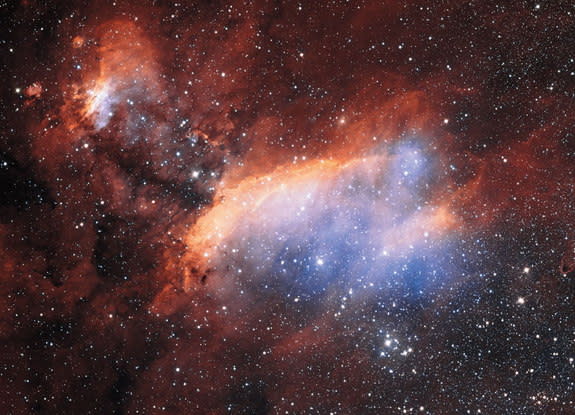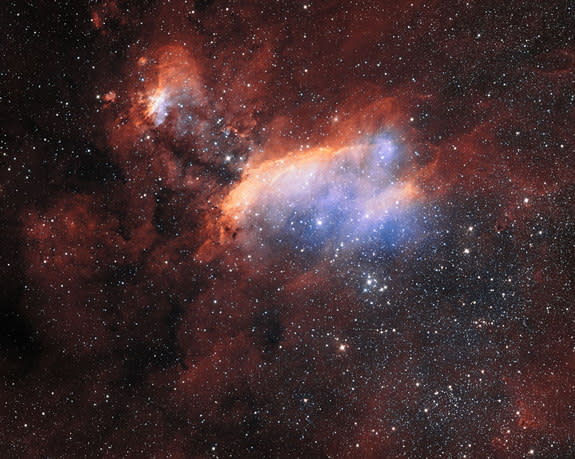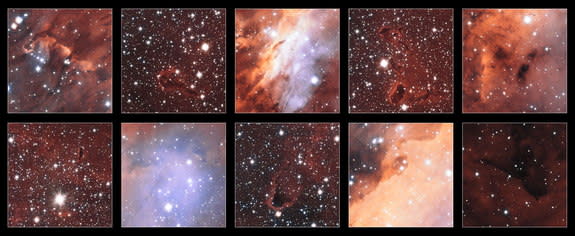Prawn Nebula Cooks Up Stars In Amazing New Photos
There is something fishy about this deep-space cosmic object.
A powerful telescope in Chile has produced amazing new photos of a giant stellar nursery known as the Prawn Nebula. Shining about 6,000 light-years from Earth, the hub of star birth was imaged by the VLT Survey Telescope at the European Southern Observatory's Paranal Observatory in what might be the sharpest photo of the cosmic object ever taken, ESO officials said.
The Prawn Nebula is about 250 light-years across and covers an area of sky equivalent to four times that of the full moon, but it is faint. According to ESO officials, most of the light emitted by the celestial sight is in wavelengths not visible to the human eye. [50 Fabulous Deep-Space Nebula Photos]
"Over the last few million years this region of sky has formed many stars, both individually and in clusters," ESO officials said in a statement. "There is a large scattered star cluster named Collinder 316 which extends over most of this image. This cluster is a part of a much larger gathering of very hot and luminous stars. Also visible are many dark structures or cavities, where interstellar matter has been blown away by the powerful winds generated by the nearby hot stars."
You can take a video tour of the Prawn Nebula set to music by Molly Durnin.
Bright, young stars in the image appear in a blue and white shade in visible light, and in ultraviolet light, the young stars make the gas surrounding them glow brilliantly.
"This radiation strips electrons from hydrogen atoms, which then later recombine and release energy in the form of light," ESO officials said. "Each chemical element emits light at characteristic color when this process occurs, and for hydrogen the predominant color is red."
This ESO photo is part of a detailed cosmic survey of a huge part of the Milky Way. As part of this project, the VLT Survey Telescope — the largest telescope designed to survey the sky in visible light — is scanning the heavens for new celestial sights light planetary nebulas and nascent stars. The telescope is also responsible for producing detailed images of star-forming regions in the galaxy.
ESO is supported by 15 countries around the world and is the "most productive ground-based astronomical observatory by far," according to officials with the organization.
Find out more about musician Molly Durnin's music here: http://www.mollydurnin.com/
Follow Miriam Kramer @mirikramer and Google+. Follow us @Spacedotcom, Facebook and Google+. Original article on SPACE.com.
Prawn Nebula's Hot Bed Of Starbirth - Sharpest View Yet | Video
Spectacular Cosmic Visions from ESO's Paranal Observatory (Gallery)
Copyright 2013 SPACE.com, a TechMediaNetwork company. All rights reserved. This material may not be published, broadcast, rewritten or redistributed.




